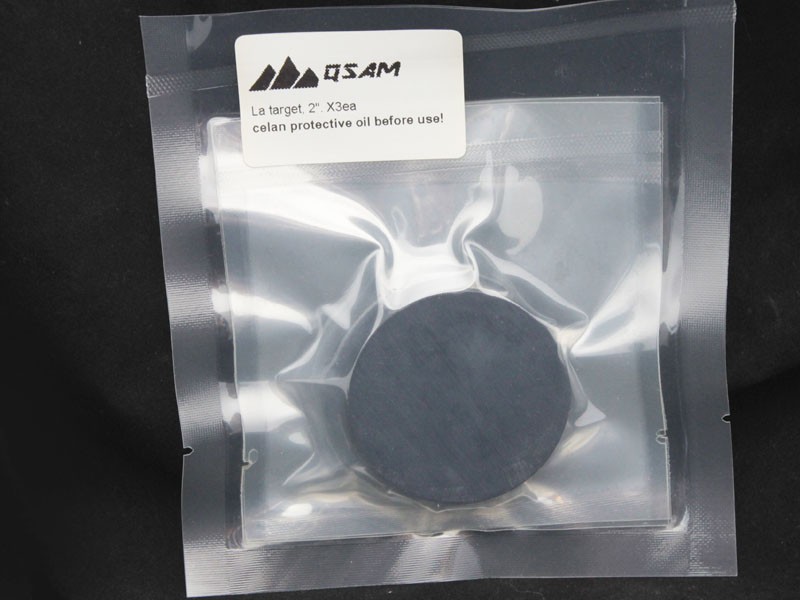Cleaning Deposition Materials Packaged in Oil
To prevent reactions, some deposition materials are stored and shipped immersed in low-viscosity mineral oil. It is important for some rare earth metal sputter targets and materials that are easily oxidized.However, before loading the oiled materials into vacuum systems, solvent cleaning is essential to remove the protective oils, which can contaminate processes. Critically, the solvents chosen should not introduce new contaminants themselves. Therefore, optimal solvent selection requires ensuring compatibility with the vacuum system and subsequent thin film procedures. In summary, cleaning with carefully selected solvents that avoid trading one contaminant for another is crucial prior to loading the mineral oil-bathed, as-shipped deposition materials into high-purity vacuum systems for thin film applications.
Selecting the Appropriate Solvent
When selecting solvents to remove oil from reactive deposition materials, purely hydrocarbon-based options are essential to avoid additional reactions. Several types of solvents must be avoided: solvents containing nitrogen like pyridine; sulfur-bearing solvents such as carbon disulfide; chlorinated solvents including trichloroethylene; and oxygenated solvents like alcohols, ketones, esters, ethers, or furans. The presence of these elements risks reactions with the deposition materials. In summary, to prevent contamination and unintended reactions during critical oil removal steps, only pure, non-reactive hydrocarbon solvents should contact deposition materials.
For cost-effective initial cleaning, technical grade hydrocarbon solvents like hexane, heptane, or isooctane are recommended. While not as pure as cleaner grades, these affordable technical solvents sufficiently remove oils before final precision cleaning with ultrapure grades, minimizing overall expenses.
Importantly, high purity hexane, heptane, or isooctane grades must be shipped, stored, and utilized only in glass containers. Despite convenience, plastic bottles like squash containers are unsuitable solvent storage since the polymers leach into the solvents. The residues then remain as contaminants after evaporation. Therefore, to prevent introducing impurities that defeat the precision cleaning purpose, hydrocarbon solvents for final oil removal must only contact glass, never plastic. In summary, glass provides the only storage mode maintaining the purity critical for final precision solvent cleaning procedures.
In a lot of cases, oil used to pack rare earth material, such as cerium sputter target, is vegetable oil,ethanol also works. However, very reactive material such as Eu could react with ethanol, making it unsuitable.

Ethanol is frequently used to rinse the material with oil
Safe Practices When Using Organic Solvents
Organic solvents pose major health hazards, so proper precautions are critical:
Avoid inhaling vapors or ingesting liquid
Prevent skin contact and especially eye exposure
Keep solvents away from open flames or heat
Moreover, all solvent handling should occur with suitable protections:
An extractive fume hood or glove box to control vapors
Protective eyewear, aprons, and respirator masks to create barriers
Impermeable gloves resistant to the specific solvent, verified through testing
In summary, organic solvents require strict usage protocols inside fume containment setups while wearing specialized layered protections like:
Vapor-blocking masks
Aprons
Impervious gloves
Sealable eyewear
This is to minimize solvent inhalation, ingestion, skin contact, and eye exposure, thereby preventing acute and chronic health effects.
Necessary Environmental Conditions
Ideally, cleaning should occur rapidly in an argon-pressurized, sealed glovebox to limit air exposure. Alternatively, complete the process quickly under fume hood ventilation or in well-ventilated rooms to minimize material air contact and operator solvent fume exposure. Whether in a controlled box or expedited in vented areas, rapid cleaning while limiting environmental air access is crucial. Overall, the cleaning environment must balance safe solvent fume removal while preventing air infiltration and oxidation during the vulnerable cleaning period through ingress prevention and swift protocols.
Required Apparatus and Supplies
The key cleaning materials include:
appropriately sized, clean glass containers like beakers and petri dishes for holding solvents and materials;
technical grade solvents for initial cleaning;
high purity solvents for final precision cleaning;
lint-free tissues for wiping;
and tongs or tweezers, thoroughly cleaned themselves, for handling the materials without contamination.
Obtaining these verified clean supplies
is imperative before attempting the solvent cleaning process.
Step-by-Step Cleaning Instructions
The cleaning procedure contains multiple key steps:
First, prepare at least three clean beakers or petri dishes per solvent type - technical and high-purity grades. Verify sufficient solvent volumes to fully immerse the deposition material.
Next, remove the material from packaging and quickly wipe away visible excess oil with a lint-free tissue. Immediately transfer to the first tech grade solvent beaker, fully immersing the material. Stir to promote dissolution. Note: Minimize air exposure time between packaging removal and solvent immersion to limit oxidation. Do not fully dry the material as this amplifies air contact without significant contamination reduction.
Subsequently, remove the material from the first tech grade solvent, wipe rapidly with a fresh tissue, then immediately immerse in the second tech grade solvent vessel. Stir to dissolve additional oil.
Repeat the immersion and wiping through all vessels containing technical grade solvent.
After the final tech grade solvent immersion, transfer the material to the first high-purity grade solvent, fully immersing and stirring to further eliminate residuals.
Repeat the immersion and wipe process for the remaining high-purity grade solvent containers.
Finally, transfer the material quickly from the last
high-purity vessel to a vacuum chamber flushed with argon. Maintain argon flow
to avoid oxidation. After material loading, seal the chamber and pump down. For reactive targets like La, Ba or Sr, presputter briefly to remove surface
oxidation.
Lanthanum target packed with oil
Throughout loading and usage, continuously flow argon at high volume when the chamber is open and sustain high vacuum with sealed chamber to protect the cleaned material.
